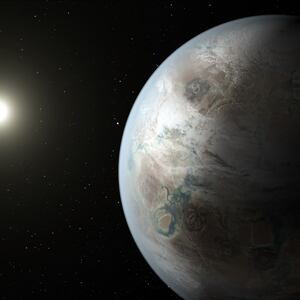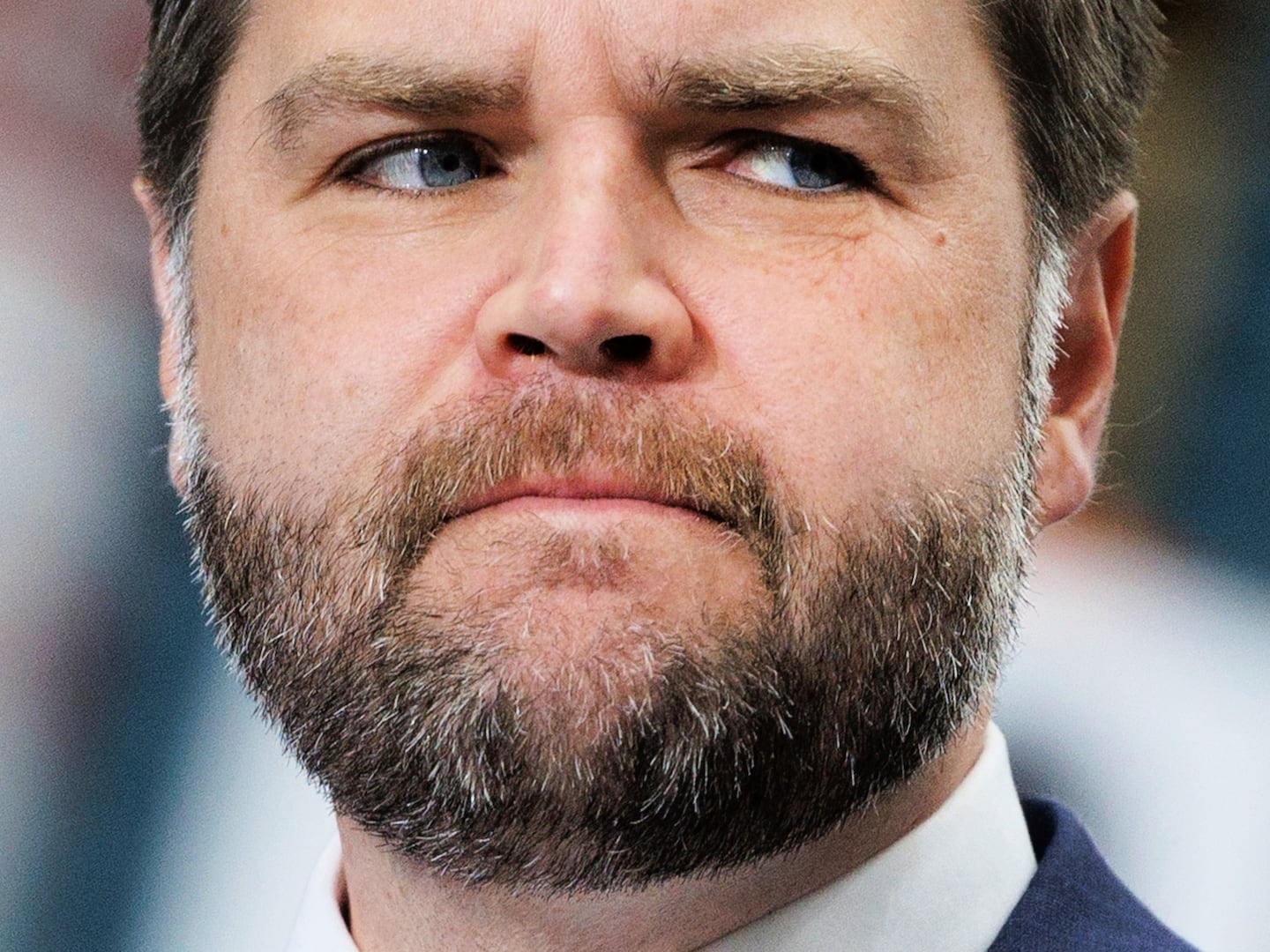If you notice a subtle change in the atmosphere on the evening of Dec. 25, it might be the vacuum created from every space scientist and enthusiast in the world holding their breath. At 7:20 a.m. Eastern Time, an Ariane 5 rocket will ignite on a launchpad in French Guiana and carry into space NASA’s James Webb Space Telescope, the largest, most expensive, most anticipated space observatory in history.
“I’m so anxious just to get it over with,” Stefanie Milam, a deputy project scientist for JWST, told The Daily Beast.
The whole astronomical community is on “pins and needles,” said Chick Woodward, a professor at the School of Physics and Astronomy at the University of Minnesota. JWST is a mission two and a half decades and nearly $10 billion in the making—about a decade and a half behind schedule with a budget that doubled between 2009 and 2021. The hope is that when the telescope returns images of the earliest stars and galaxies to form after the Big Bang some 13.6 billion years ago, all the extra time and money will dissolve into a distant rounding error. The science, experts agree, will be worth the wait.
“A lot of use are excited to finally realize a dream the community has had for the last 25 or 30 years to have a big, large-aperture telescope in space that can really push the bounds of knowledge, from exoplanets and their atmospheres to first stars that lit the universe,” Woodward said.
Webb is often billed as the successor to the Hubble Space Telescope, which has awed us with its pictures of the cosmos since the 1990s. But Webb is three times bigger and about 100 times more powerful. With its 21-foot-wide primary mirror (Hubble’s is 8 feet wide), Webb will capture the faint ancient light of the oldest stars and galaxies in the universe. Hubble, Milam said, can see what the universe looked like in its teenage years; Webb will show us its baby pictures. (More toddler than infant, she explained, since everything was dark at the very beginning, and we don’t know how to view that—yet.)
“Say we do see a galaxy, we’re seeing that galaxy as it was billions of years ago. It’s like looking back in time. It’s looking at a photograph of that galaxy,” Milam said. “Our planet didn’t even exist when that light was emitted. That object may not exist today.”
In the billions of years since the universe was first created, it’s been expanding, with the oldest bodies moving farther and farther out. As they travel, the light waves they emit have stretched from the visible into the infrared spectrum—an interstellar Doppler effect. Webb is designed to capture these longer wavelengths with its massive mirror, which is coated in a microscopic layer of gold that makes it even more reflective to infrared.
Because the telescope is sensitive to infrared radiation and infrared radiation is thermal radiation—also known as heat—the telescope has to be really, really cold to get good resolution. That is why NASA is launching it toward a particular spot in space called Lagrange Point 2, one million miles away from Earth in the opposite direction of the sun. It will take “a long month of terror” (as Milam calls it) for JWST to reach L2, where, due to a gravitational peculiarity, it will pretty much stay put, orbiting the sun in lockstep with the Earth, always in the cool of its shadow. (It will burn a little fuel every few weeks to keep stable; the tank will last about 10 years, the projected life of the mission.)
To further insulate its mirror from the heat radiating off Earth and the sun, Webb is equipped with a sun shield the size of a tennis court that acts as an enormous beach umbrella. This has to be folded like origami to fit into the rocket for the trip to space—alongside the gigantic mirror made of 18 smaller hexagons, and all the whiz-bang tech that make Webb the most sophisticated scope of its kind.
Once at L2, the telescope spends a month unfolding itself bit by bit; then another five months cooling down and booting up. If the mylar-balloon-like sun shield rips, or the mirrors won’t align, the $9.66 billion mission could be a bust before it even starts.
Webb’s first year in space is already booked for research projects from institutions around the world. Some of that time has been earmarked for Tiffany Kataria, who studies exoplanets— planets that orbit stars outside our solar system—at NASA’s Jet Propulsion Laboratory.
Ground telescopes, Hubble, and an infrared space telescope called Spitzer that retired last year have provided useful but limited information about exoplanets. “We have learned as much as we can about their atmospheres from [those telescopes],” Kataria said. “With JWST, we get access to the wavelengths at which many exoplanets emit their light; this radiation can tell us a lot about a planet’s climate and chemistry.”
These readings can help Kataria and her collaborators confirm what these exoplanets’ atmospheres are like and whether they might harbor signs of alien life. In other words, Webb could be responsible for helping us determine whether or not we are alone in the universe.
Woodward is also on the schedule for Webb’s first year. He won’t be looking to the far reaches of the universe, or even at other solar systems, but at space dust flying off comets and asteroids right here on our own neck of the space woods. Webb is especially good at reading the thermal emissions coming off these small bodies that don’t reflect much visible sunlight.
“We’re looking for the ingredients that led to the formation of rocky planets in the inner part of the solar system,” he said. “If you want to understand how to build a terrestrial world like the one we live on, you have to understand what it’s made of.”
Woodward will also be using Webb to do recon on a metal asteroid named Psyche that’s orbiting the sun between Jupiter and Mars. NASA is preparing a mission to Psyche, and it could set the stage for future space mining. Next fall, JWST will observe the agency’s DART spacecraft’s kamikaze rendezvous with an asteroid.
If all that sounds like science fiction, Woodward points out that so did a lot of Webb’s technology when the project started in 1996. The original launch was planned for between 2007 and 2011. Then it was pushed to 2018. Then 2019, 2020, 2021—March, October, Dec. 18, Dec. 22, and now Dec. 25. Getting the telescope from fictional to functional has taken a lot longer than expected.
“There’s a lot of new stuff on this telescope that hasn’t flown in space before,” Milam said. “A lot of what has gone into the development of this mission is to test things to make sure they actually work in space… because we can’t send astronauts to fix JWST if it doesn’t work.” She referred to the calamitous 1990 launch of Hubble with a flawed primary mirror that caused blurry images. A crew was dispatched to install corrective lenses in 1993. Hubble, hovering 350 miles above Earth, was reachable. Webb won’t be. There’s no room for error on this.
There’s also been a lot NASA can’t be blamed for: a blizzard during testing at Goddard Space Flight Center in Maryland; a hurricane in Houston when they were testing at Johnson Space Center; an earthquake in California; and, of course, a pandemic.

JWST being folded up ahead of its transport to French Guiana for launch.
NASA/Chris Gunn“As a taxpayer, as a citizen, or even an international partner, it’s stressful,” Milam said about the delays. “But once it’s up there and working and rewriting the text books, it’s not something to hem and haw about.”
To be sure, there’s been no shortage of either hemming or hawing up till now. On top of being 14 years late and costing about 10 times initial estimates, even the name of the telescope has been a sticking point. Prior to leading NASA through its famed Apollo years, James Webb served as an undersecretary in the Truman administration during the Lavender Scare, when thousands of gay government workers were summarily relieved of their duties. More than 1,700 astronomers and enthusiasts signed a petition to change the name. NASA declined.
Though Woodward said JWST’s “long and tortuous development” has been “catastrophic” for his research group, which has to re-plan its science program every time there’s a delay, he’s far from bitter and looking forward to the Dec. 25 launch with what he characterized as stoic resignation. “The telescope better be in focus.”
Editor's note 12/21: The launch has been pushed back to Dec. 25. Dates in this article have been updated.







